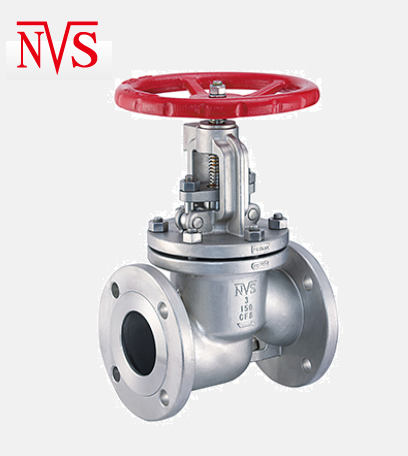A globe valves is a linear motion valve and are primarily designed to stop, start and regulate flow. The disk of a Globe valve can be totally removed from the flowpath or it can completely close the flowpath.
Conventional Globe valves may be used for isolation and throttling services. Although these valves exhibit slightly higher pressure drops than straight=through valves (e.g., gate, plug, ball, etc.), they may be used where the pressure drop through the valve is not a controlling factor.
Because the entire system pressure exerted on the disc is transferred to the valve stem, the practical size limit for these valves is NPS 12 (DN 300). Globe valves larger than NPS 12 (DN 300) are an exception rather than the rule. Larger valves would require that enormous forces be exerted on the stem to open or close the valve under pressure. Globe valves in sizes up to NPS 48 (DN 1200) have been manufactured and used.
Globe valves are extensively employed to control flow. The range of flow control, pressure drop, and duty must be considered in the design of the valve to avert premature failure and to assure satisfactory service. Valves subjected to high-differential pressure-throttling service require specially designed valve trim.
Generally the maximum differential pressure across the valve disc should not exceed 20 percent of the maximum upstream pressure or 200 psi (1380 kPa), whichever is less. Valves with special trim may be designed for applications exceeding these differential pressure limits.
Advantages
- Can be fast-acting
- Precise control
- Can be used in high-pressure systems
Disadvantages
- High head loss
- Large opening for disk assembly
- Heavier than other valves
- Cantilevered mounting of the disk to the stem
- Low coefficient of flow
- Not good for clean or sterile applications
The most common application of the globe valve is a standard water faucet. When the handle is turned, a disc is lowered or raised. When the disc is fully lowered, the water supply is shut off.
Typical Applications Of Globe Valves Include:
- Cooling water systems where flow needs to be regulated
- Fuel oil systems where flow is regulated and watertightness is of importance
- High-point vents and low-point drains when watertightness and safety are major considerations
- Feedwater, chemical feed, condenser air extraction and extraction drain systems
- Boiler vents and drains, main steam vents and drains, and heater drains
- Turbine seals and drains
- Turbine lube oil system
If you need more choice of globe valves, I recommend that you can visit Nico Valves Corp. – the company specializes in kinds of high quality valves including cast steel globe valve, gate valve, check valve, threaded valve, and much more. Now, welcome to check out Nico’s website and feel free to contact them.
Article Source: https://2bnews.wordpress.com/2018/07/10/introduction-of-globe-valves-2/

